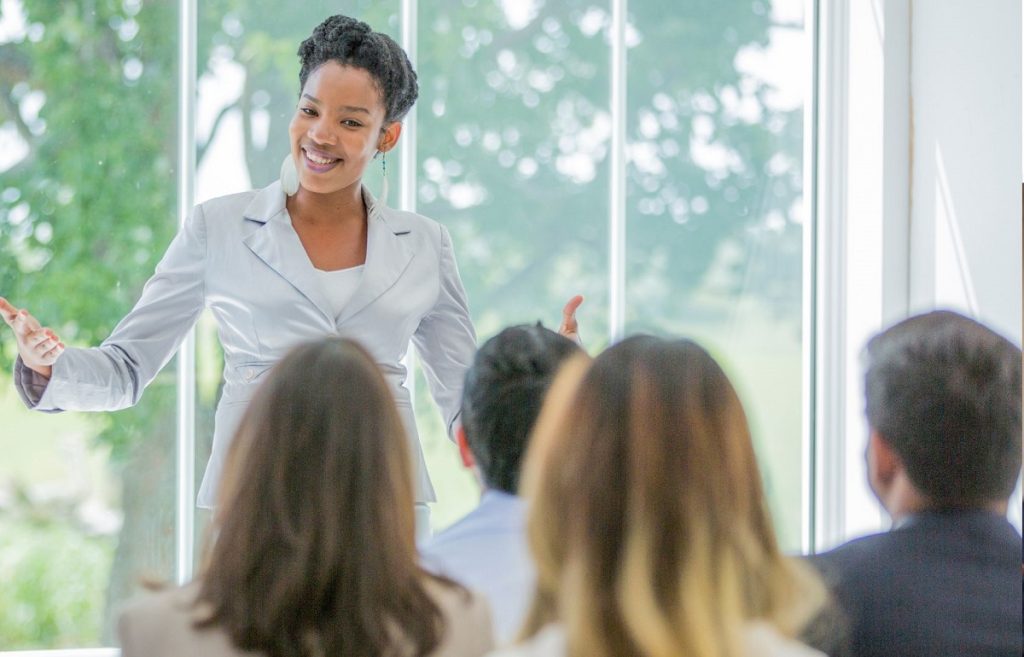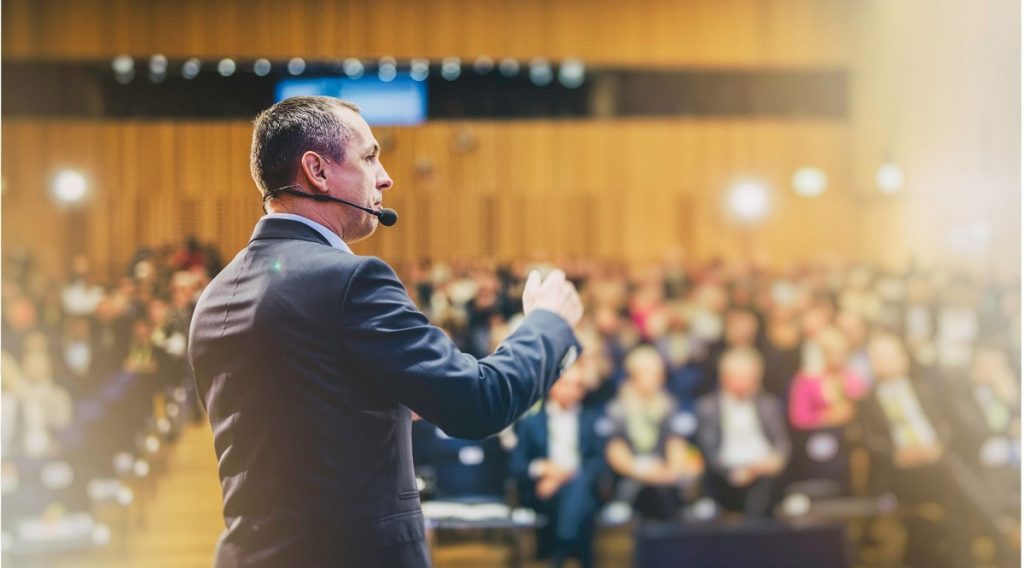A welcome speech is a short speech that greets attendees and sets the tone for an event. It can be instructional, informative, persuasive, or inspirational, as the speaker gets the audience interested in the event, makes them feel welcome, and gives them an overview of what to expect.
Whether you attend a wedding, a conference, or the spring concert at your kid’s school, you can expect the first order of business to be a welcome speech. The host or their representative will kick off the event with opening remarks or a welcome address to make the audience feel at home.
The welcome speech should be the verbal equivalent of a handshake!
This speech serves a bigger purpose than simply welcoming people to the event, as there are often pieces of information about the schedule that those in attendance would want to know before the function starts. How do you write a great welcome speech? Let us help you!
What Is A Typical Welcome Speech?
The basics of speech writing apply to a welcome speech. Like most speeches, it has three main components: the introduction, the body, and the conclusion.
- Greeting: First, greet everyone in attendance and then introduce yourself to the audience and begin setting the event’s tone.
- Body: In the body of the speech, provide important information, set the tone for the events, or warm up the audience. You might also introduce the first speaker, in which case you discuss that person’s credentials.
- Conclusion: Your welcome speech might send participants to various sessions or usher in the first speaker.

What Is The Purpose Of A Welcome Speech?
Unlike most other speeches that have a life of their own with a topic, a welcome speech serves the rest of the program.
You want people to feel welcome attending an event. Telling people that it is with “great pleasure” that you welcome them to an event starts things off on a positive note.
An excellent welcome speech then warms up the audience for what is about to occur, whether that is a keynote speech, breakout sections for a conference, or a special event.
When Does The Welcome Speech Take Place?
Welcome speeches open up many events.
- Annual Functions. At events such as a church picnic, company annual meeting, or corporate data retreat, the opening speech would be a welcome and an explanation of what will occur at the event.

- Award Ceremonies. At award shows such as the Oscars or other huge televised events or a collegiate sports award banquet, a master or mistress of ceremonies may welcome guests and tell the order of what’s to follow. and introduce the first presenter.
- Church Welcome Speech. Many churches welcome anyone to visit and see what they are all about. They may have an informal greeting for visitors and special guests. One church I visited invited all guests or new people to stop by a welcome table for a small gift of a coffee mug and devotional.

- Commencement. Graduation ceremonies warmly welcome the graduates and attendees before diplomas are presented..
- Conference. Welcome speeches set the right tone for a conference, lets attendees know what’s next and who the first speaker is.
- Corporate events. A formal event such as a data retreat or an informal occasion like a yearly celebration picnic will include a short welcome speech.
- Special Events. Milestone birthdays, anniversaries, religious ceremonies, etc., may have a person welcoming guests.
How Do You Start A Welcome Speech?
A welcome speech starts by acknowledging the time of day by simply saying “Good morning,” “Good afternoon,” or “Good evening.”
You then state how happy you are to be offering the welcome to whatever the event is. An example is to say, “My name is (name), and I am thrilled to have been given the honor of welcoming all of you distinguished guests who have assembled here today.”
When welcoming guests at a wedding, you could start out by saying, “We are so grateful to all of the friends, family members, and other loved ones who have come to share in (bride) and (groom’s) special day.”
Keeping it Warm
Sometimes, the opening speaker wants to ensure that people feel the environment is warm and inviting. In addition to choosing words that sound inviting and welcoming, such as “it is our pleasure” and “we are so thrilled that you all could make it today,” body language is essential.
Smiling is the first thing that will help ease anxiety and leave people feeling at ease. Also, avoid crossing your arms in front of your body, as that can make you appear closed off or angry. Making eye contact and focusing on smiling when you speak couple together to create a warm environment as you welcome guests.

Tips For A Welcome Speech?
Some of these tips are specific to giving a welcome speech, and others are just good practice for any form of public speaking.
- Eye Contact: There are better ways to give a strong speech than reading right off of a piece of paper. Look up at the audience periodically to offer eye contact.
- Practice: The more you practice, the better your speech will sound. One can practice in front of a mirror, with friends, or even by making a video and watching it yourself.
- Remember the Purpose: Why are these particular people assembled on this day? Acknowledging why everyone is in the same room is a good way to help you frame your speech’s contents.
- Time: Talk to the person heading up the event to learn how long you should speak. Only talk as long as they have invited you to speak. Remember quality over quantity.
- Word Choice: Once you have given the purpose of the event thought, you can move on and decide what type of language is more appropriate. For a professional conference or commencement, formal language would fit in best. However, informal language would be preferred if you are welcoming wedding guests.

